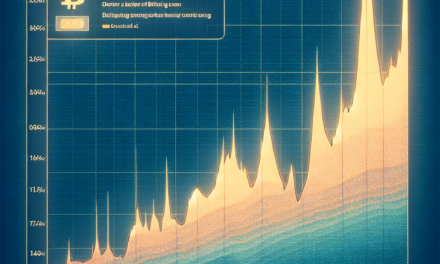“Unlocking Growth: 3 Tech Stocks Ready to Split and Soar”
Introduction
In the dynamic world of technology, stock splits often signal a company’s robust growth and confidence in its future prospects. As tech giants continue to innovate and expand, investors keenly watch for potential stock splits, which can make shares more accessible and attractive to a broader range of investors. This strategic move can also enhance liquidity and marketability, often leading to increased investor interest and potential upward momentum in stock prices. In this context, three tech stocks are currently garnering attention for their potential to announce a split, reflecting their strong market performance and optimistic growth trajectories. These companies are not only leaders in their respective fields but also exhibit the financial health and strategic foresight that make them prime candidates for a stock split.
Understanding Stock Splits: What They Mean for Investors
In the dynamic world of investing, stock splits often capture the attention of both seasoned investors and newcomers alike. A stock split occurs when a company increases the number of its outstanding shares, thereby reducing the price per share, without affecting the company’s overall market capitalization. This maneuver is typically executed to enhance the stock’s liquidity and make it more accessible to a broader range of investors. As we delve into the intricacies of stock splits, it is essential to understand their implications for investors and identify tech stocks that are currently poised for such a strategic move.
Stock splits are generally perceived as a positive signal, reflecting a company’s robust performance and optimistic future prospects. When a company announces a stock split, it often indicates that its share price has risen to a level that may be perceived as too high for average investors. By splitting the stock, the company aims to make its shares more affordable, thereby attracting a larger pool of potential investors. This increased accessibility can lead to greater demand for the stock, potentially driving up its price over time. However, it is crucial for investors to recognize that a stock split does not inherently alter the fundamental value of the company; rather, it is a cosmetic change that can influence market perception.
In the technology sector, where innovation and rapid growth are the norm, several companies have recently reached share price levels that suggest a stock split may be on the horizon. One such company is Alphabet Inc., the parent company of Google. With its shares trading at a premium, a stock split could make Alphabet’s stock more appealing to retail investors. The company’s consistent revenue growth, driven by its dominance in digital advertising and cloud computing, positions it as a strong candidate for a split. Moreover, Alphabet’s commitment to innovation, as evidenced by its investments in artificial intelligence and autonomous vehicles, underscores its potential for sustained growth.
Another tech giant that investors should keep an eye on is Amazon.com Inc. Known for its e-commerce prowess and cloud computing services, Amazon has seen its stock price soar over the years. A stock split could serve as a strategic move to broaden its investor base, particularly as the company continues to expand into new markets such as healthcare and entertainment. Amazon’s ability to adapt and innovate in response to changing consumer demands further solidifies its status as a potential candidate for a stock split.
Lastly, Tesla Inc., the electric vehicle manufacturer, is a tech stock that has captured the imagination of investors worldwide. Tesla’s stock has experienced significant volatility, yet its long-term growth trajectory remains promising. A stock split could enhance Tesla’s appeal to retail investors, especially as the company continues to scale its production capabilities and expand its product lineup. Tesla’s commitment to sustainable energy solutions and its ambitious plans for global expansion make it a compelling candidate for a stock split.
In conclusion, while stock splits do not directly impact a company’s intrinsic value, they can influence investor sentiment and market dynamics. For investors, understanding the rationale behind a stock split and identifying companies with strong growth potential is crucial. As Alphabet, Amazon, and Tesla continue to innovate and expand, they stand out as tech stocks poised for a split, offering intriguing opportunities for investors seeking to capitalize on the evolving landscape of the technology sector.
The Impact of Stock Splits on Share Prices
Stock splits have long been a strategic tool employed by companies to make their shares more accessible to a broader range of investors. By increasing the number of shares while maintaining the overall market capitalization, stock splits can enhance liquidity and potentially attract new investors. In the technology sector, where share prices can soar to significant heights, stock splits are particularly relevant. As we delve into the impact of stock splits on share prices, it is essential to consider three tech stocks that are currently poised for a split: Apple, Tesla, and Amazon.
Historically, stock splits have been perceived positively by the market, often leading to a temporary boost in share prices. This phenomenon can be attributed to the psychological effect on investors who perceive the stock as more affordable post-split. For instance, when Apple announced its 4-for-1 stock split in 2020, the company’s shares surged in anticipation of the split, reflecting investor optimism. Similarly, Tesla’s 5-for-1 stock split in the same year resulted in a significant uptick in its share price. These examples underscore the potential for stock splits to generate increased investor interest and drive up share prices, at least in the short term.
Turning our attention to the present, Apple remains a key player to watch. Despite its previous splits, Apple’s share price continues to climb, making it a candidate for another split. The company’s robust financial performance, driven by strong product sales and innovative services, has sustained its upward trajectory. A stock split could further democratize ownership, allowing more retail investors to participate in Apple’s growth story. Moreover, by enhancing liquidity, a split could facilitate smoother trading and potentially reduce volatility, benefiting both existing and prospective shareholders.
Tesla, another tech giant, is also on the radar for a potential stock split. The electric vehicle manufacturer has experienced exponential growth, with its share price reflecting the company’s ambitious expansion plans and technological advancements. A stock split could serve as a strategic move to maintain momentum and broaden its investor base. By making shares more affordable, Tesla could attract a new wave of investors eager to capitalize on the burgeoning electric vehicle market. Furthermore, a split could reinforce Tesla’s image as an accessible and innovative company, aligning with its mission to accelerate the world’s transition to sustainable energy.
Lastly, Amazon presents a compelling case for a stock split. As one of the most valuable companies globally, Amazon’s share price has reached levels that may deter smaller investors. A stock split could address this issue, making shares more attainable and potentially boosting market participation. Additionally, with Amazon’s continued expansion into diverse sectors such as cloud computing, entertainment, and logistics, a split could signal confidence in its long-term growth prospects. By increasing the number of shares available, Amazon could enhance liquidity and foster a more dynamic trading environment.
In conclusion, while stock splits do not inherently alter a company’s fundamental value, they can have a significant impact on share prices by influencing investor perception and behavior. As Apple, Tesla, and Amazon contemplate potential splits, investors should consider the broader implications for market dynamics and individual investment strategies. By understanding the nuances of stock splits and their effects, investors can make informed decisions in navigating the ever-evolving landscape of tech stocks.
Top Tech Stocks Likely to Announce a Split
In the ever-evolving landscape of the stock market, tech stocks have consistently captured the attention of investors, both seasoned and novice. As these companies continue to grow and expand their influence, the prospect of stock splits becomes an intriguing possibility. Stock splits, while not altering the intrinsic value of a company, can make shares more accessible to a broader range of investors, potentially driving up demand and liquidity. In this context, three tech giants stand out as prime candidates for a stock split in the near future.
Firstly, Apple Inc. remains a perennial favorite among investors, and for good reason. The company has a history of executing stock splits, with the most recent one occurring in 2020. Since then, Apple’s stock has continued to climb, driven by robust sales of its flagship products and innovative ventures into new markets such as augmented reality and electric vehicles. As Apple’s share price edges higher, a stock split could be on the horizon to maintain affordability for retail investors. Moreover, a split could further enhance Apple’s appeal, reinforcing its position as a cornerstone in many investment portfolios.
Transitioning to another tech behemoth, Amazon.com Inc. presents a compelling case for a stock split. Historically, Amazon has been reticent to split its stock, with the last split taking place in 1999. However, the company’s share price has soared to levels that may deter smaller investors. With Amazon’s continued dominance in e-commerce and cloud computing, coupled with its forays into artificial intelligence and logistics, the company is well-positioned for sustained growth. A stock split could democratize access to Amazon’s shares, potentially broadening its investor base and enhancing market liquidity.
Meanwhile, Alphabet Inc., the parent company of Google, is another tech titan that investors should keep an eye on. Alphabet executed a stock split in 2014, and since then, its stock has appreciated significantly. The company’s diverse portfolio, ranging from its core search engine business to ventures in autonomous vehicles and smart home technology, underscores its potential for long-term growth. As Alphabet’s share price continues to rise, a stock split could serve as a strategic move to attract a wider array of investors, thereby reinforcing its market position.
In addition to making shares more accessible, stock splits can also signal a company’s confidence in its future prospects. By lowering the price per share, companies can potentially increase trading volume and attract new investors, which can be particularly beneficial in a volatile market environment. Furthermore, stock splits can enhance a company’s visibility and appeal, drawing attention from both institutional and retail investors.
In conclusion, while stock splits do not inherently change a company’s market capitalization, they can have significant implications for investor sentiment and market dynamics. Apple, Amazon, and Alphabet are three tech stocks that are well-positioned to consider such a move, given their strong market performance and growth trajectories. As these companies continue to innovate and expand their influence across various sectors, a stock split could serve as a strategic tool to maintain their competitive edge and broaden their investor base. Investors would do well to monitor these tech giants closely, as a stock split announcement could present new opportunities in the ever-competitive world of technology investing.
How Stock Splits Affect Market Perception
Stock splits have long been a strategic tool employed by companies to make their shares more accessible to a broader range of investors. By increasing the number of shares while maintaining the overall market capitalization, stock splits can enhance liquidity and potentially attract new investors. In the tech sector, where stock prices can soar to significant heights, splits are particularly relevant. As we delve into the dynamics of stock splits, it is essential to consider how they affect market perception and which tech stocks are currently poised for such a strategic move.
Firstly, stock splits can alter market perception by making a company’s shares appear more affordable. When a high-priced stock undergoes a split, the reduced price per share can psychologically appeal to retail investors who might have been deterred by the higher price tag. This perceived affordability can lead to increased trading volume, as more investors are able to purchase shares. Consequently, this heightened activity can enhance liquidity, making it easier for investors to buy and sell shares without significantly affecting the stock’s price.
Moreover, stock splits can signal confidence from a company’s management. By opting for a split, management may be indicating their belief in the company’s continued growth and stability. This can positively influence investor sentiment, as it suggests that the company anticipates sustained or increased demand for its shares. In the tech industry, where innovation and rapid growth are key, such signals can be particularly impactful. Investors often interpret stock splits as a sign that a company is performing well and expects to maintain its upward trajectory.
Currently, several tech stocks are garnering attention as potential candidates for stock splits. One such company is Tesla, which has already executed multiple splits in recent years. With its stock price continuing to climb, another split could be on the horizon. Tesla’s innovative approach to electric vehicles and energy solutions has kept it at the forefront of the tech industry, and a stock split could further solidify its position by making its shares more accessible to a wider audience.
Another tech giant to watch is Amazon. Despite its recent focus on cost-cutting and efficiency improvements, Amazon’s stock price remains relatively high. A stock split could serve to attract more retail investors, particularly as the company continues to expand its cloud computing and e-commerce operations. By making its shares more affordable, Amazon could potentially increase its investor base and enhance market perception.
Lastly, Nvidia is a tech stock that has been on a remarkable upward trajectory, driven by its leadership in graphics processing units and artificial intelligence. With its stock price reaching new heights, a split could be a strategic move to maintain investor interest and accessibility. Nvidia’s continued innovation in AI and gaming technology positions it as a strong candidate for a stock split, which could further bolster its market presence.
In conclusion, stock splits can significantly influence market perception by making shares more accessible and signaling confidence in a company’s future. As Tesla, Amazon, and Nvidia continue to thrive in the tech sector, their potential stock splits could attract new investors and enhance liquidity. By understanding the implications of stock splits, investors can better navigate the evolving landscape of tech stocks and make informed decisions about their portfolios.
Historical Performance of Tech Stocks Post-Split
The phenomenon of stock splits has long intrigued investors, particularly within the technology sector, where rapid growth and innovation often lead to significant increases in stock prices. Historically, tech stocks have demonstrated a unique pattern of performance following a split, often characterized by increased liquidity and accessibility for a broader range of investors. This trend can be attributed to the psychological and practical effects of a lower stock price, which tends to attract more retail investors and can lead to increased trading volume. Consequently, the post-split period often witnesses a surge in investor interest, which can drive the stock price higher, at least in the short term.
To understand the historical performance of tech stocks post-split, it is essential to consider the underlying reasons for a company to initiate a stock split. Typically, a stock split is a strategic decision made by a company to make its shares more affordable and appealing to a wider audience. This is particularly relevant in the tech sector, where companies often experience rapid growth, leading to substantial increases in their stock prices. By splitting their stock, these companies aim to maintain an optimal price range that encourages investment without altering the underlying value of the company.
Examining past instances of stock splits in the tech industry reveals a pattern of positive performance in the aftermath of such events. For example, companies like Apple and Tesla have executed stock splits in recent years, resulting in notable increases in their stock prices post-split. This can be partially explained by the increased demand from retail investors who perceive the lower price as an opportunity to invest in high-growth companies. Moreover, the increased liquidity resulting from a stock split can lead to tighter bid-ask spreads, making it easier for investors to buy and sell shares without significantly impacting the stock price.
However, it is important to note that while stock splits can lead to short-term gains, they do not inherently change the fundamental value of a company. The long-term performance of a tech stock post-split is ultimately determined by the company’s ability to sustain growth and innovation. Therefore, investors should consider the broader market conditions and the company’s strategic direction when evaluating the potential impact of a stock split.
In addition to the psychological and liquidity effects, stock splits can also signal a company’s confidence in its future prospects. By opting for a split, a company may be indicating its belief in continued growth and its commitment to maintaining shareholder value. This can further bolster investor confidence and contribute to positive post-split performance.
In conclusion, the historical performance of tech stocks post-split suggests that these events can lead to increased investor interest and short-term price appreciation. However, it is crucial for investors to conduct thorough research and consider the company’s long-term growth potential when assessing the implications of a stock split. As the tech sector continues to evolve, stock splits will likely remain a strategic tool for companies seeking to optimize their stock price and attract a diverse investor base. By understanding the historical context and potential outcomes of stock splits, investors can make more informed decisions and capitalize on opportunities within the dynamic tech industry.
Key Indicators That a Tech Stock May Split
In the ever-evolving landscape of the stock market, tech stocks have consistently captured the attention of investors due to their potential for rapid growth and innovation. One of the intriguing phenomena in the realm of tech stocks is the stock split, a corporate action that can signal a company’s confidence in its future prospects. Understanding the key indicators that suggest a tech stock may be poised for a split can provide investors with valuable insights and opportunities.
To begin with, a significant indicator that a tech stock may be on the verge of a split is its sustained upward trajectory in share price. When a company’s stock price rises to a level that may be perceived as too high for average investors, the company might consider a stock split to make shares more accessible. This is particularly relevant in the tech sector, where companies often experience rapid growth due to technological advancements and market demand. For instance, when a tech company’s stock price consistently reaches new highs, it may opt for a split to attract a broader base of investors, thereby enhancing liquidity and marketability.
Moreover, another key indicator is the company’s historical precedent and management’s strategic approach. Companies with a history of stock splits may be more inclined to continue this practice as part of their growth strategy. This is often seen in tech giants that have split their stocks multiple times over the years, using it as a tool to maintain an optimal trading range. Additionally, management’s communication and forward-looking statements can provide clues about potential splits. If executives express confidence in the company’s growth trajectory and hint at making shares more accessible, it could be a precursor to a stock split.
Furthermore, market conditions and investor sentiment play a crucial role in determining the likelihood of a stock split. In bullish markets, where investor confidence is high and tech stocks are experiencing robust demand, companies may be more inclined to announce splits. This is because a split can further fuel investor enthusiasm and drive up demand for the stock. Conversely, in bearish markets, companies might hold off on splits, focusing instead on stabilizing their stock price and navigating market volatility.
Additionally, the competitive landscape within the tech industry can influence a company’s decision to split its stock. As tech companies vie for market share and investor attention, a stock split can serve as a strategic move to differentiate a company from its peers. By making shares more affordable, a company can potentially attract a new wave of investors, thereby increasing its market presence and competitive edge.
In conclusion, while predicting a stock split is not an exact science, several key indicators can provide valuable insights into the likelihood of such an event. A sustained rise in share price, historical precedent, management’s strategic approach, favorable market conditions, and competitive dynamics all play pivotal roles in determining whether a tech stock may be poised for a split. For investors, staying attuned to these indicators can offer a strategic advantage, enabling them to make informed decisions and capitalize on potential opportunities in the dynamic world of tech stocks. As the tech sector continues to evolve, keeping an eye on these factors will be essential for those looking to navigate the complexities of the stock market.
Investor Strategies for Capitalizing on Stock Splits
In the ever-evolving landscape of the stock market, tech stocks have consistently captured the attention of investors due to their potential for significant growth. One strategy that has gained traction among savvy investors is capitalizing on stock splits. A stock split occurs when a company increases its number of shares, reducing the price per share, while maintaining the overall market capitalization. This maneuver often makes the stock more accessible to a broader range of investors, potentially driving up demand and, consequently, the stock price. As we look ahead, there are three tech stocks poised for a split that investors should keep on their radar.
Firstly, consider the case of Alphabet Inc., the parent company of Google. Alphabet has consistently demonstrated robust financial performance, driven by its dominance in digital advertising and its strategic investments in cloud computing and artificial intelligence. The company’s stock price has soared over the years, making it less accessible to smaller investors. A stock split could democratize ownership, allowing more investors to participate in Alphabet’s growth story. Moreover, a split could enhance liquidity, making it easier for investors to buy and sell shares. As Alphabet continues to innovate and expand its market presence, a stock split could serve as a catalyst for further appreciation in its stock price.
Transitioning to another tech giant, Amazon.com Inc. presents a compelling case for a potential stock split. Amazon’s stock has experienced exponential growth, fueled by its e-commerce dominance and its rapidly expanding cloud services division, Amazon Web Services (AWS). The high price of Amazon shares has been a barrier for many retail investors, limiting their ability to invest in the company. A stock split could alleviate this issue, making Amazon’s shares more affordable and attractive to a wider audience. Additionally, a split could signal management’s confidence in the company’s future prospects, potentially boosting investor sentiment. As Amazon continues to diversify its business and explore new growth avenues, a stock split could be a strategic move to sustain its upward trajectory.
Lastly, Tesla Inc. is another tech stock that investors should watch closely for a potential split. Tesla has been at the forefront of the electric vehicle revolution, with its innovative products and ambitious vision for sustainable energy. The company’s stock has seen remarkable gains, reflecting investor optimism about its growth potential. However, the high price of Tesla shares has been a deterrent for some investors. A stock split could address this issue, making Tesla’s shares more accessible and appealing to a broader range of investors. Furthermore, a split could enhance liquidity and trading volume, contributing to a more dynamic market for Tesla’s stock. As Tesla continues to expand its production capacity and explore new markets, a stock split could reinforce its position as a leader in the automotive industry.
In conclusion, stock splits can be a powerful tool for tech companies to enhance their market appeal and drive investor interest. Alphabet, Amazon, and Tesla are three tech stocks that are well-positioned for a potential split, each with unique growth drivers and market opportunities. By keeping a close eye on these companies, investors can strategically position themselves to capitalize on the potential benefits of stock splits, ultimately enhancing their investment portfolios. As the tech sector continues to evolve, stock splits will remain a key consideration for investors seeking to maximize their returns in this dynamic market.
Q&A
1. **Question:** What is a stock split?
– **Answer:** A stock split is a corporate action in which a company divides its existing shares into multiple shares to boost the liquidity of the shares.
2. **Question:** Why do companies perform stock splits?
– **Answer:** Companies perform stock splits to make their shares more affordable to investors, increase liquidity, and broaden the shareholder base.
3. **Question:** Which tech stock is known for frequent stock splits?
– **Answer:** Apple Inc. is known for frequent stock splits, having split its stock multiple times in its history.
4. **Question:** What is a potential benefit of investing in a company before a stock split?
– **Answer:** Investing in a company before a stock split can potentially lead to gains as the stock becomes more accessible to a broader range of investors, possibly driving up demand and price.
5. **Question:** Name a tech company that recently announced a stock split.
– **Answer:** As of the latest updates, Alphabet Inc. (Google’s parent company) announced a 20-for-1 stock split in 2022.
6. **Question:** How does a stock split affect the market capitalization of a company?
– **Answer:** A stock split does not affect the market capitalization of a company; it only increases the number of shares while reducing the price per share proportionally.
7. **Question:** What is a reverse stock split?
– **Answer:** A reverse stock split is a corporate action in which a company reduces the number of its outstanding shares, increasing the share price proportionally, often to meet stock exchange listing requirements.
Conclusion
Tech stocks often undergo splits to make shares more affordable and attractive to a broader range of investors, potentially increasing liquidity and market interest. Three tech stocks poised for a split might include companies with high share prices, strong growth prospects, and solid financial performance. These companies often have a history of stock splits and are leaders in their respective sectors. Monitoring their financial health, market trends, and any announcements regarding stock splits can provide investors with opportunities to capitalize on potential price movements and increased market participation.





